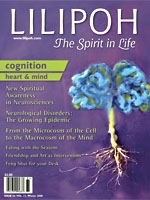Author: Walter Alexander
Issue: Winter 2008: Cognition, Heart & Mind – Issue #54, Vol. 13
Study of Mistletoe Treatment for Colorectal Cancer
Among cancer patients being treated surgically for stage I-III non-metastatic colorectal carcinoma, those who received supportive care with the fermented mistletoe extract Iscador (ISC) (from Viscum album L.) along with conventional adjuvant (given after surgery) chemo- and/or radiotherapy had fewer adverse drug reactions (ADRs) as compared with those who received similar treatment with only passive aftercare. “Stage I-III” implies a range from very early stages to those in which the tumor has spread to nearby lymph nodes. The observational study was based on medical records from 804 consecutive patients (429 ISC, 375 controls) treated at 26 centers in Germany and Switzerland. The lead investigator was W.E. Friedel, MD, Hospital Bad Bocklet, Bad Bocklet, Germany.
Patients received subcutaneous ISC injections two or three times per week as part of long-term supportive care. Investigators compared ADRs related to conventional supportive care or to care with ISC added, duration of hospitalization, and disease-free survival (DFS). In their analysis, they adjusted for any differences in patients’ baseline characteristics that could affect outcomes.
After treatment of about two months and at a mean follow-up of 55 months, ADRs were reported in 19.1% of patients receiving ISC and in 48.3% of patients receiving passive supportive care. The difference was highly significant statistically. Side effects related to the gastrointestinal system and to the central nervous system, especially, were reduced among those receiving ISC. Karnofsky Index, a measure of a patient’s general status, which was actually lower (worse) at baseline in the ISC group, improved continuously in the ISC group and was still at baseline level in the control group at the end of therapy. Hospital stays were significantly shorter (mean 35.5 days ISC, versus 41.2 days in controls) and the hazard ratio (risk of experiencing a tumor-related event such as tumor recurrence, distant metastasis or death) was a significant 32% lower for the ISC group.
Systemic reactions caused interruption of therapy in 1.2% of cases and 23.3% of ISC patients had mild to moderate injection site reactions. No life-threatening or persisting ADRs were attributed to ISC, however, nor were any tumor increases reported with ISC.
Dr. Friedel concluded that in this largest-to-date systematic comparative clinical data evaluation concerning supportive mistletoe treatment in colorectal cancer, in the ISC group there were significantly fewer ADRs from chemotherapy/radiotherapy, fewer disease- and therapy-related symptoms, and longer disease-free survival. “Based on these data,” he said, “a prospective randomized clinical trial to confirm these results is warranted.”
Mistletoe for Pancreatic Cancer Treatment
In a further study of Iscador (ISC) as part of supportive care, the mistletoe extract demonstrated strong benefits as compared with conventional supportive care among patients with pancreatic carcinoma receiving adjuvant chemotherapy (with or without radiotherapy). “Adjuvant” signifies treatment given in addition to primary treatment (usually surgery). Chemotherapy among 400 patients treated at 17 German and Swiss centers was mostly gemcitabine.
Study author P. Heusser, MD, Institute of Complementary Medicine (KIKOM), University of Bern, Bern, Switzerland, noted that mistletoe therapy is often used in Europe as supportive treatment among cancer patients, mainly to reduce adverse drug reactions (ADRs) of conventional chemo- and/or radiotherapy and to improve quality of life. Dr. Heusser’s study was designed to evaluate the effectiveness and safety of ISC given as a subcutaneous injection two or three times per week in 205 patients, at any stage of pancreatic carcinoma, receiving adjuvant chemotherapy and/or radiotherapy, or passive aftercare. A control group of 195 patients received conventional therapy only. The primary outcome measure was rate of ADRs. Results were adjusted to compensate for differences in baseline differences.
Patients in the ISC group had a significantly lower ADR rate than controls (13.7% versus 48.9%). Persistent therapy-related symptoms after the first therapy course, especially gastrointestinal symptoms, central nervous system (CNS) symptoms or back pain, were consistently better in the ISC group. Karnofsky index improved in the ISC group and deteriorated in the conventional treatment group, with a significant 4.5% difference (mean values 79.1% versus 74.7%). Mean hospitalization duration was shorter in the ISC group (39.5 days versus 53.6 days), and overall survival (mortality hazard ratio) was better in the ISC group (42% lower mortality risk than controls). The mortality benefit was more pronounced in those with metastatic disease.
Dr. Heusser underscored that this study is the largest systematic comparative clinical data evaluation ever performed concerning supportive mistletoe treatment in pancreatic carcinoma. Aside from the positive findings in reduced ADRs and symptoms, the longer overall survival suggests an independent beneficial effect in all pancreatic carcinoma tumor stages.
